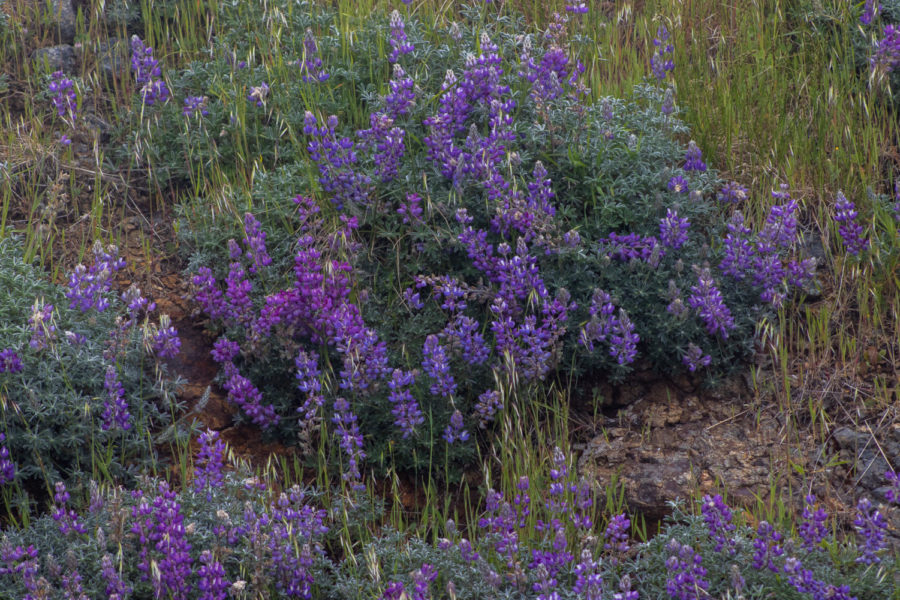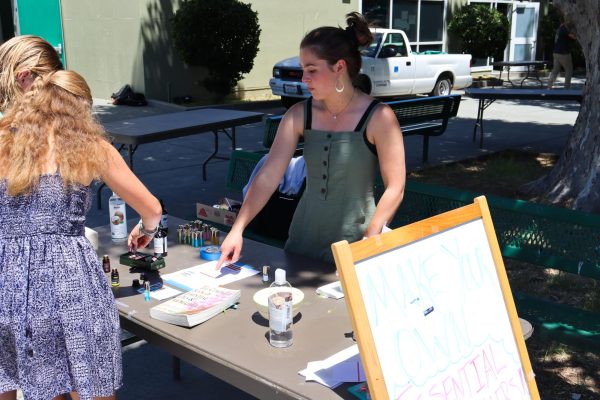Marin’s wildflowers burst into a super bloom after heavy winter rainfall
California began experiencing “super blooms” at the beginning of April, a phenomenon that describes various wildflowers blooming in abundance. The last instance of a California super bloom was in 2019 and before that in 2017. After four years without the abundance of wildflowers, California’s blooms are so grand that NASA’s Earth Observatory images captured them.
Due to dependence on a variety of different factors, it isn’t clear how long this abundance of blossoming will last.
Sarah Jacobs is the California Academy of Science curator of botany. Jacobs published a video on super blooms to inform others about this event,
“Super Bloom, it’s not really a technical term, it’s a kind of way that we describe a really intense blooming period. The recipe for the super bloom is really about three things: timing, temperature, and moisture,” said Jacobs.
This particular combination is common in California’s climate. Super blooms are the result of heavy rainfall events and unusually wet winters, which California recently experienced.
“If there’s a drought [such as the] three years of drought like we’ve had leading up to this year, [the seeds] all kind of stay and they don’t bloom and they don’t germinate, and then when the rain comes, they all [bloom] in the same year,” said Micheal Rawlins, Archie Williams SEA-DISC teacher.

According to Kristin Jakob, the Co-Vice President of the California Native Plant Society Marin Chapter, super blooms are often most spectacular in drier areas, such as the desert, after the rainfall.
“[Super blooms are stronger] often in drier areas like the inner coast ranges,” said Jakob. Years of drought followed by heavy rain have made for the ideal blooming conditions.
“In Southern California, the hills around the Grapevine, for instance, the desert, they’re even more famous for the effects of the super blooms,” said Jakob.
Marin has seen beautiful flower displays recently despite the humidity. According to Jakob, some of the best places to view the super bloom are Burdell Mountain in Novato, Ring Mountain in Tiburon, the north side of Mount Tam near the reservoirs, parts of the Bolinas Ridge, and the headlands along the coast.
Super blooms aren’t usually huge patches of bright flowers, so they can be overlooked. While the effects are often breathtaking, some blooms aren’t quite as flashy.
“Most people associate [super blooms] with conspicuous flowers that either have large individual flowers or are so densely growing that they show us a sort of mass of color. But that’s just a superficial description of the effect that impresses people viewing it,” Jakob said.
The extreme atmospheric rivers and prolonged moisture left in the ground led this year’s super bloom to a later start. The typical window for super blooms is March through May, but this super bloom has appeared in the later half of that time frame.
“I would say the whole month of April was probably good, and it will continue to be good into May,” said Jakob.
Currently, West Marin is one the best places in the Bay Area to catch sight of the extensive blossoming of flora in California. After years of drought followed by a substantial amount of rain, the Golden State is bursting with color.
Your donation will support the student journalists of Archie Williams High School. Your contribution will allow us to purchase equipment and cover our annual website hosting costs. Each donation will receive a magazine subscription for a year (6 copies a year), and become a part of the important work our publication is doing.
$35 -- Subscription to the magazine
$50 -- Silver Sponsorship
$75 -- Gold Sponsorship
$100 -- Platinum Sponsorship

Ava is a sophomore, in her second year of the class. She loves to dance, specifically ballet and has been doing it most her life. Her favorite thing to...
Isa is in 10th grade and her first year of journalism. She joined this class because she loves writing and she wanted to get the experience of working...













